In San Francisco, the area South of Market Street is called SoMa. The part of town North of the Panhandle is known as NoPa. Around the intersection of North Oakland, Berkeley and Emeryville, real estate brokers are pitching properties as part of NOBE. An area of downtown Oakland is being branded as KoNo, short for Koreatown Northgate. But no one actually calls it that, or at least, not yet.
These types of names have spiraled to the point of parody. In an episode of South Park, part of the town gets rebranded as SoDoSoPa (South of Downtown South Park):
There’s a certain quality to the vibe of SoDoSoPa. From the independent merchants to unique cafes to the rustic charm of a mixed-income crowd.
Meanwhile, in an episode of How I Met Your Mother, two characters buy an apartment in DoWiSeTrePla, which turns out to short for Downwind of the Sewage Treatment Plant.
And these conventions have permeated just about every major city in America. In New York, there are brokers rebranding parts of Harlem as SoHa, sections of Little Italy as NoLita, and entire swaths of The Bronx as SoBro. And often with these new names, come newer, higher property valuations. At the intersection of Prospect Heights and Crown Heights, (ProCro) real estate brokers now list properties in the traditionally more affordable area of Crown Heights at Prospect Heights price points.
There is not really a name for this naming convention. They are not quite acronyms, not quite portmanteaus, and not just abbreviations. We at 99% Invisible have been calling them acronames, or if you want to get in the spirit of the thing: AcNa’s for short.

From Boston and Washington DC to Seattle and Denver, you can find places like LoDo, SoDo, SoMa, SoWa, all tracing their AcNa lineage back to SoHo, short for South of Houston Street in Manhattan (note: London’s Soho is not an acroname).
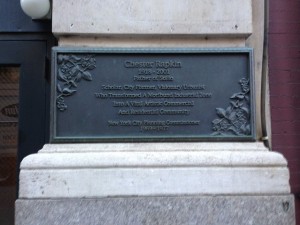
The origin of New York’s SoHo can be traced back to 1962 and a man named Chester Rapkin. He was an urban planner and eventually a member of the New York City Planning Commission. He was asked to investigate the conditions in what was then called the South Houston Industrial Area (known before that as Hell’s Hundred Acres), and right around that time, possibly coined by Rapkin in conversation, city officials started referring to the area as SoHo.
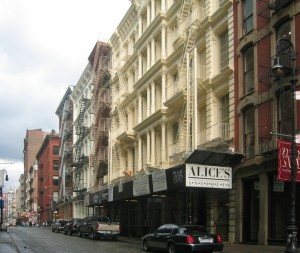
At the time, SoHo was zoned for industrial manufacturing but had a lot of vacancies and a reputation of dilapidation. The area was threatened with demolition, its brick buildings and cast-iron facades seen as ugly and outdated, and it’s tired, old factories at odds with the rest of Manhattan. In the 1960s, under the influence of Robert Moses, tearing down and rebuilding was the norm, but Rapkin’s report suggested another approach: preserve and renovate for ongoing manufacturing uses.
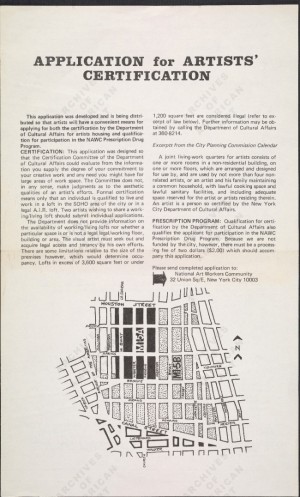
Artists began renting these spaces for studios, and in many cases: living there too to save money. In the 1970s, the neighborhood became renowned as an arts district. The area was not meant to be inhabitable, which led to a loophole: artists were effectively classified as ‘machines’ who ‘manufactured’ art. Machines, of course, could stay in factories overnight. Soon, performers, painters and musicians were hosting happenings and art openings out of these loft spaces, attracting media attention.
Following the success of SoHo, urban planners sought to create a mixed-use area of factories and residences in nearby TriBeCa (Triangle Below Canal Street). Like SoHo, Tribeca became hip and desirable, evolving to be a high-end neighborhood of boutiques and condos.
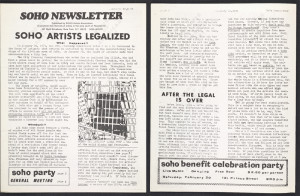
SoHo and Tribeca not only reflect the rise of acronames, but also the birth of industrial chic. At first, the aesthetic was minimalistic, but it ultimately incorporated traditional markers of luxury: marble bathtubs, expensive wine-vaults, high-end furniture, all intermingling with the exposed brick and metal beams from the factories’ origins. Today, of course, lofts in these old industrial buildings are worth millions, and new developments, in SoHo and around the world, often mimic their historical looks. Giving such places a new and trendy name (especially an acroname) is now a leading indicator of imminent neighborhood change, a sign of gentrification to come (like a Whole Foods opening).
Surveying residents in an area in South Philadelphia, a Princeton researcher found a clear distinction in how the residents referred to their neighborhood. Minorities generally called it South Philly, but newer (mostly white) residents called it Graduate Hospital, a name they were sold by realtors (there used to be a hospital in the area). Other residents have given it names like GHo or SoSo (South of South Street). And perhaps this is a natural evolution, these neighborhoods changing names. But critics increasingly see something more intentional behind these developments, a conscious effort on the part of real estate agents and other parties to speed transitions of neighborhoods and attract people who have more money to spend.
Acronames are easy to lampoon, but a new trend may be in the works: using more authentic-sounding names, like the rapidly-changing neighborhood of Temescal in Oakland. No matter what you call it, though, it all seems to be a thinly veiled facilitator of gentrification.
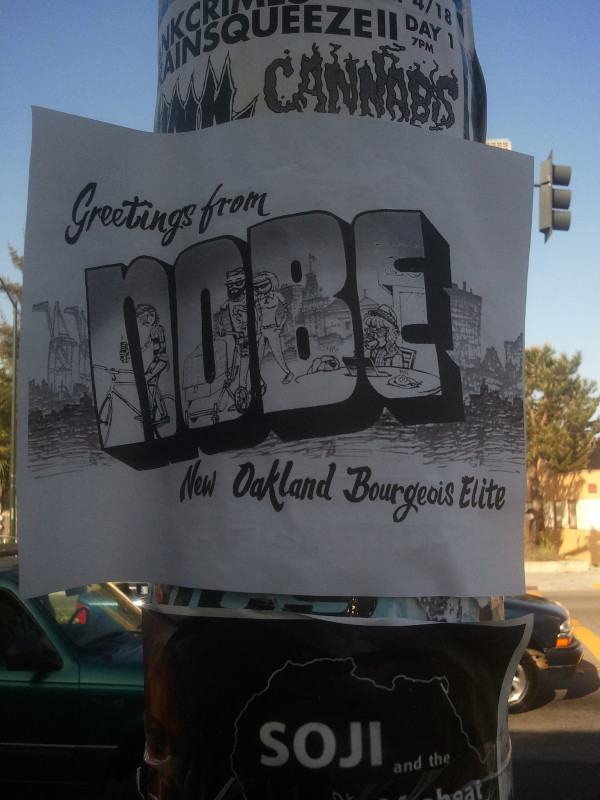
Back in NOBE, residents who feel queasy and uneasy about that name do have other options when deciding what to call it. In this case, if you ask people on the street, they most often just refer to the area as North Oakland, which is all it really needs to be (and sounds a lot less silly than NOBE).



Comments (23)
Share
SOHO
ˈsōhō/
adjective
adjective: SOHO
relating to a market for relatively inexpensive consumer electronics used by individuals and small companies.
Origin
1990s: acronym from small office home office .
Just started listening to the episode and laughed out loud because my small town, Middletown, CT has a neighborhood (well, technically one block) called NoRa for North of Rapallo St. in effort to beautify what was once a bad section of town.
My fave neighborhood is MiRo (Mister Rogers).
I feel like this is criminally under-appreciated.
Saying you live in “South Philly” wouldn’t be very helpful. It would be like saying “Lower Manhattan.” Well, what neighborhood in Lower Manhattan? South Philly has always had smaller neighborhoods within it like Pennsport, Grays Ferry, and Passyunk. Graduate Hospital (“G-Ho”) was actually push-back from the residents after real estate folks started using “SoSo” (South of South Street) and “3S” (????) to describe the nab.
Ajene Moss is the local artist who made the NOBE poster
Is “AcNa” taking it too far?
You forgot DUMBO: Down Under the Manhattan Bridge Overpass.
When SoHo quickly became too costly for young artists, brave urban pioneers looked to Brooklyn in the early 70s. We named our dying manufacturing neighborhood DUMBO (down under the Manhattan Bridge overpass) as a joke on acronaming. We hoped it would discourage real estate developers. Who would want to live in a place called DUMBO? Never thought it would stick, much less appear in ads for luxury lofts.
As I understand it, many residents of SF were anti-NOPA when that thing started years ago. It was an effort to rebrand Western Addition and the Divis corridor by realtors as well, I believe. Which is hilarious, because both of those areas are just as much east of the panhandle as they are north. But EOPA just doesn’t have the same ring to it.
There’s a newish design and arts district in San Francisco called DoReMi (Dogpatch, Potrero Hill, Mission)
NoMad stands for north of Madison Sq Park. Madison Ave runs north to south.
“DUMBO Heights” is a supposedly super cool mixed use development/loft-type techy place in Brooklyn. I can scarcely believe the name. I wouldn’t want to live in a place that sounds like “the heighth of stupidity” . It’s being developed by Donald Trump’s son-in-law……..
Downtown? You mean DoTo?
CraPennSta: Crap around Penn Station (in Manhattan). Please use it.
Here in Denver an apartment building is trying to rebrand what I think of as “south broadway” into “SoBo” makes no gd sense!! However, Sobr wouldn’t really describe this hipster neighborhood accurately.
I really think we should push to call them “partmanteaus” before “acronames” can take hold
“Acronames are easy to lampoon, but a new trend may be in the works: using more authentic-sounding names, like the rapidly-changing neighborhood of Temescal in Oakland.”
Temescal has been in continuous use to describe that North Oakland neighborhood since at least the late 1800’s! The boundaries may always be in flux and it depends on who you ask but there’s no question that many people have, for a very long time, identified themselves as residents of the Temescal neighborhood. Definitely not a new trend.
You can read more about it in Jeff Norman’s “Temescal Legacies: Narratives of Change from a North Oakland Neighborhood.”
Came here to make the same comment. Even anecdotally, I remember people calling it Temescal at least 25 years ago, long before the recent gentrification wave.
An excellent show! Before my brother got priced out and moved to Flatbush, he joked that the stretch of Smith Street that he lived on, between Butler and Baltic, was ButLic.
NextDoor.com defines your area by neighborhood names, many on the map are new to my eyes, and just down the road.
I much prefer the cryptic neighborhood names we get in old cities. Here in Worcester Ma we have all the hill neighborhoods (union hill, vernon hill, etc), all the squares and circles (colombus circle, washington square), block designations (Beacon-Brightly), and then the weird ones… Green Island, which is not green or an island, Burncoat, Tatnuck, Beaver Brook, Quinsigamond. Love em
Hello, I’m from the future.
I’m sorry to report that, as of 2019, “acronames” has not caught on.
I suggest that the correct term for this type of word, according to my second-grade teacher, is a “contraction”. From Wikipedia:
“A contraction is a shortened version of the written and spoken forms of a word, syllable, or word group, created by omission of internal letters and sounds.”